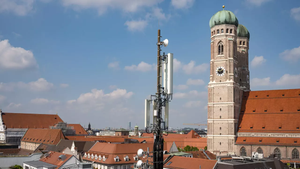Switzerland Sets $222M Base Fee in 5G Auction
Switzerland kicks off its 5G auction process and will announce the final winners by June next year.

Swiss telecom authorities have fired the starting gun on the country's 5G auction, setting minimum prices for a range of frequencies that will rake in at least 220 million Swiss francs ($222 million) for government coffers.
The auction, which includes spectrum in the 700MHz, 1400MHz, 2.6GHz and 3.4-3.8GHz bands, will kick off in January 2019, with radio licenses due to be awarded by June.
The airwaves are needed to support upcoming 5G technology, which European operators expect to launch in 2019 or 2020 to provide a capacity boost on mobile data networks.
Switzerland's three mobile operators -- Swisscom AG (NYSE: SCM), Sunrise Communications AG and Salt SA -- are expected to bid for the new frequencies, but regulatory authority ComCom is not anticipating interest from a new entrant.
Accordingly, it is imposing restrictions on the amount of spectrum that any operator can acquire. In the paired 700MHz band, an operator will not be able to bid for more than half of the 2x30MHz on offer. Each will also be limited to 25MHz of unpaired spectrum across the 700MHz and core 1400MHz bands, where a total of 55MHz is up for grabs.
That will mean there are no restrictions on another 50MHz of unpaired 1400MHz spectrum.
But in the important 3.4-3.8GHz range, which has attracted much of the recent 5G attention as an all-purpose band, spectrum holdings will be capped at 120MHz per operator.
ComCom has also indicated there will be a cumulative bidding restriction to prevent two operators together from acquiring more than 2x25MHz in the 700MHz band if another operator is interested in acquiring this spectrum.
"These restrictions were imposed so that a financially strong bidder can acquire at most half of the frequencies," said ComCom in its auction documents. "Assuming there are three bidders, this means that each operator, given a corresponding willingness to pay, has the possibility of acquiring frequencies for a 5G rollout."
According to the regulator, operators are likely to use frequencies to address 4G "bottlenecks" as well as to introduce 5G technology. Most of the spectrum will be valid until 2033.
Want to know more about 5G? Check out our dedicated 5G content channel here on
Light Reading.
Amid some concern that European regulators would attach high base prices to 5G spectrum, Swiss telcos are likely to be happy with the minimum fees that ComCom has set.
Unsurprisingly, the highest base prices are linked to the 700MHz airwaves, which carry signals over much longer distances than high-band spectrum.
Fierce bidding for spectrum might still drive end prices up to much higher levels, but a repeat of the 3G fiasco -- when operators spent tens of billions of dollars on licenses -- is inconceivable.
During a UK auction of 5G spectrum in May, operators collectively spent about £1.4 billion ($1.9 billion). The UK's 3G auction at the turn of the millennium raised a staggering £22.5 billion ($29.9 billion, at today's exchange rate) for government coffers and left operators mired in debt. (See UK's £1.4B '5G' auction looks bad for industry.)
— Iain Morris, International Editor, Light Reading
Read more about:
EuropeAbout the Author(s)
You May Also Like


.jpg?width=300&auto=webp&quality=80&disable=upscale)









